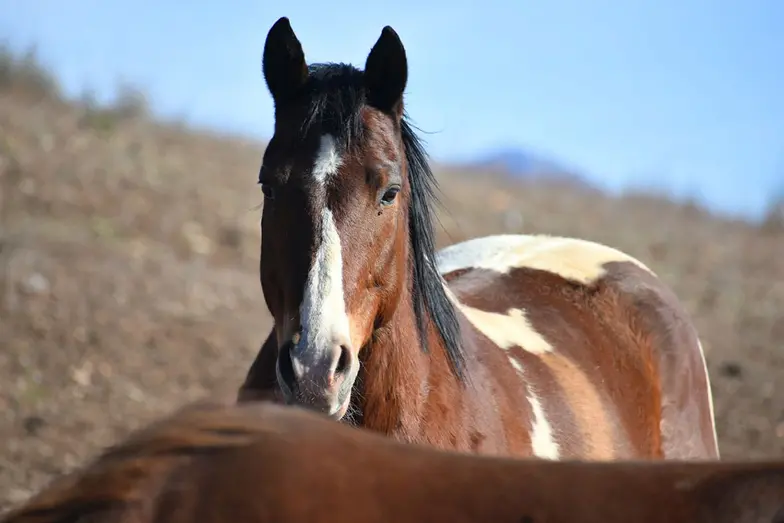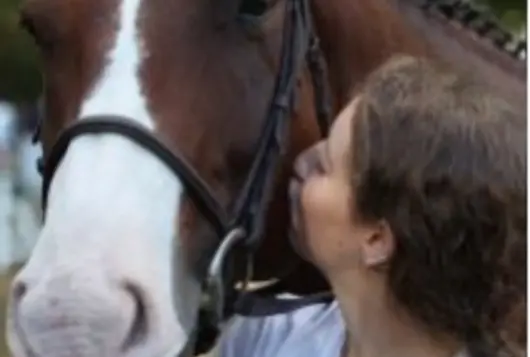6 Ways to Protect Horses While Transferring Ownership

Maintaining ownership of a horse who is no longer in your possession may seem like a good way to protect the animal, but there are at least 6 reasons you should consider transferring ownership at the time of adoption.
So how do you hand over the reins (and ownership) and feel confident the new owner will care for the horse appropriately? It starts with a solid matchmaking and adoption process, followed by thoughtful policies and procedures, and continues with purposeful relationship building.
1. Medical and Behavior Assessments
Once a horse is medically evaluated, the most important thing you can do to place them into a good home is getting an accurate assessment of their temperament and skills, says Garret Leonard, former director of Harmony Equine Adoption Center in Franktown, CO.
Harmony developed an effective assessment plan to help keep both horse and rider safe during the process.
2. Foundational Training
Making sure a horse has basic ground manners and, if rideable, basic saddle training, will help keep them safe. Harmony has a tried-and-true training program for rideable horses, which serves as an excellent model for other organizations to use.
3. Permanent Identification
Microchips are an inexpensive method for identifying horses, providing an effective way to reunite owners with their horses in the event of theft, natural disaster, or other loss. Some microchip companies allow adoption centers to remain as a backup contact on the chip, providing an extra safety net for each horse, such as ASPCA Right Horse Partner Microchip ID Equine’s LifeTrac program.
The recent launch of the universal Equine Microchip Lookup Tool makes microchipping more efficient. And with more breed and sports associations requiring microchips, they are becoming the norm and are even required in some states, like Louisiana.
Having a generous and clearly communicated return policy goes a long way to providing a safety net for your horses.
4. Good Matchmaking
Once you know the personality, skills and any physical limitations of a horse, spending time with adopters is key to finding a good match. At Harmony, potential adopters are offered 3 riding lessons at the facility before bringing the horse home. Leonard says taking the time upfront prevents returns down the line—and with a return rate of only 3 percent, it’s clear the program works.
Another way to make better matches? Use a conversational adoption process with lots of open-ended questions that help you build trusting relationships with potential adopters and understand their goals, desires, and abilities.
5. Open-Door Policy
Having a generous and clearly communicated return policy goes a long way to providing a safety net for your horses, as well as providing a valuable benefit to adoption. Collette Duddy, executive director of Second Chance Thoroughbreds in Spencer, NY, says, “We stress to our adopters that we will always take the horse back if things don’t work out.”
The organization also offers a 2-month trial period that allows adopters to return a horse for a full refund.
6. Follow-up and Relationship Building
Besides creating a good match from the start, following up with adopters may be the next most important step in keeping adopted horses safe. Periodic check-ins will allow you to address any behavioral, medical, or financial issues early on before the horse becomes at risk. It’s key to ensure that these check-ins are positive and friendly, communicating your wishes to support the adopter, rather than giving them a feeling of being surveilled.
Adoption centers use different tactics for keeping track of adopted horses, but some successful techniques include phone calls, surveys, emails, and even private Facebook groups, where adopters post updates and photos of adopted horses. Post-adoption counseling and relationship building can be an excellent role for experienced volunteers to fill.
According to Candy Haasch, founder of Warriors of the Rainbow Horse Sanctuary in Reeds, MO, “It’s the goodwill, friendship and mutual interest in the well-being of the horse that will protect them, not a legal writ.”
Downloads
Download AllWe have lots more on this subject:

